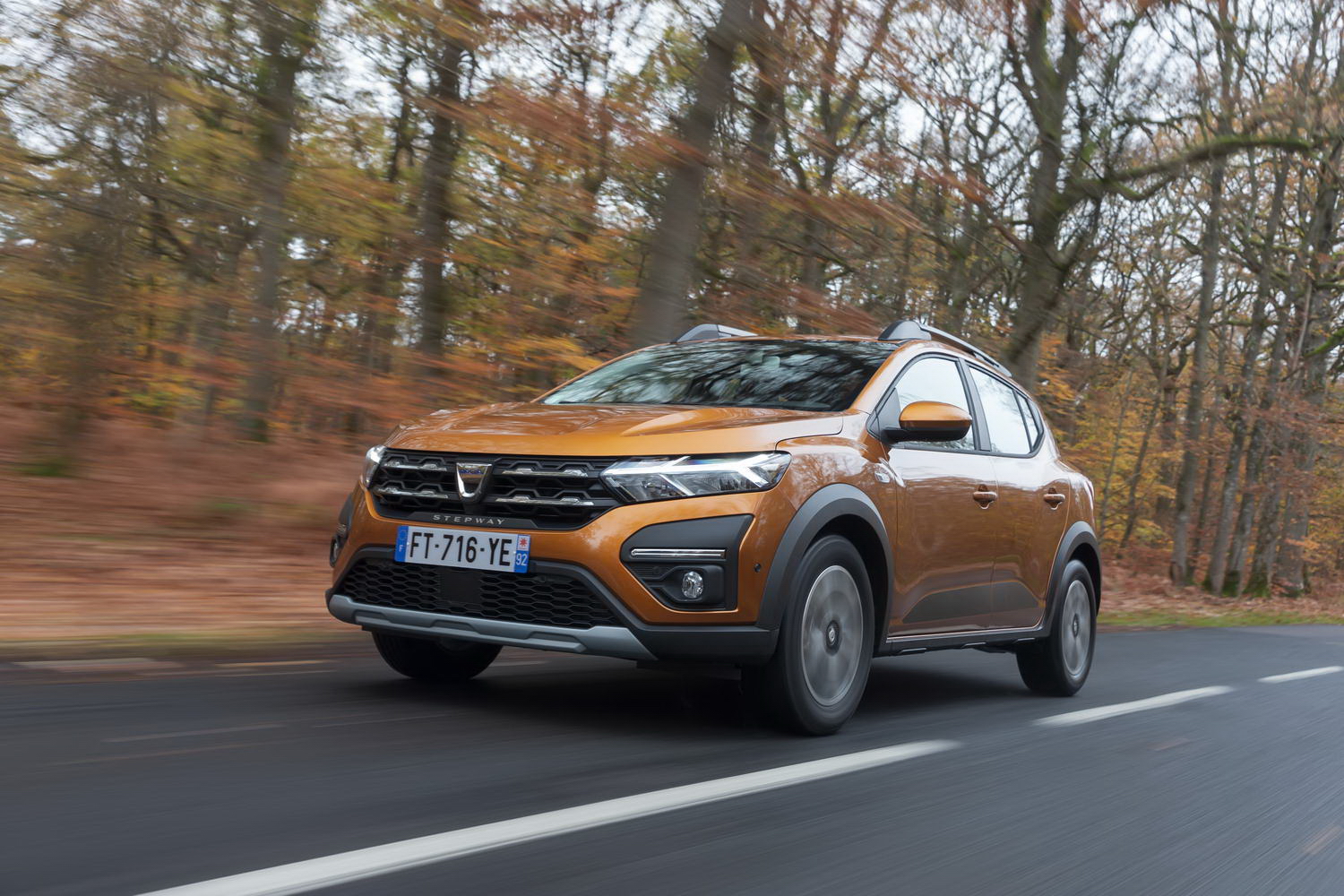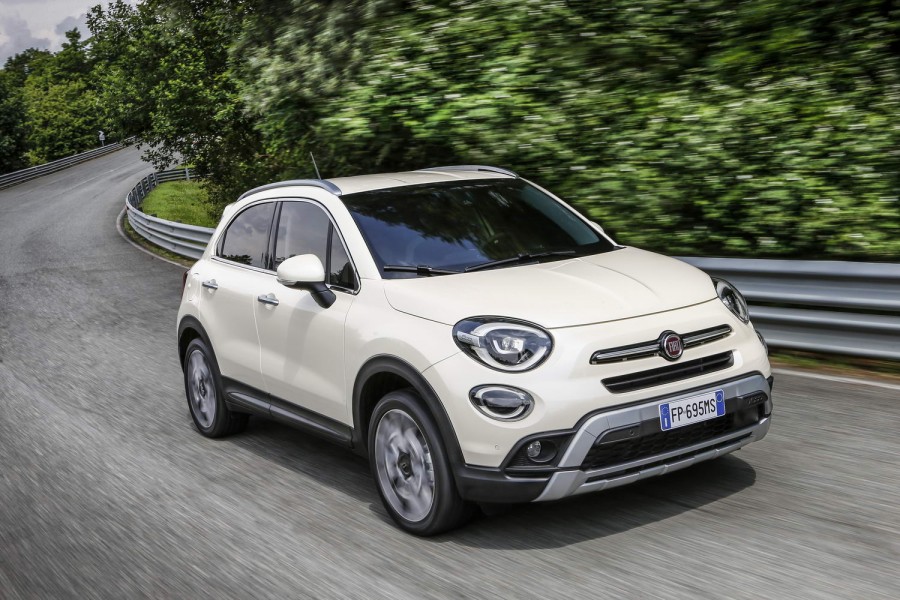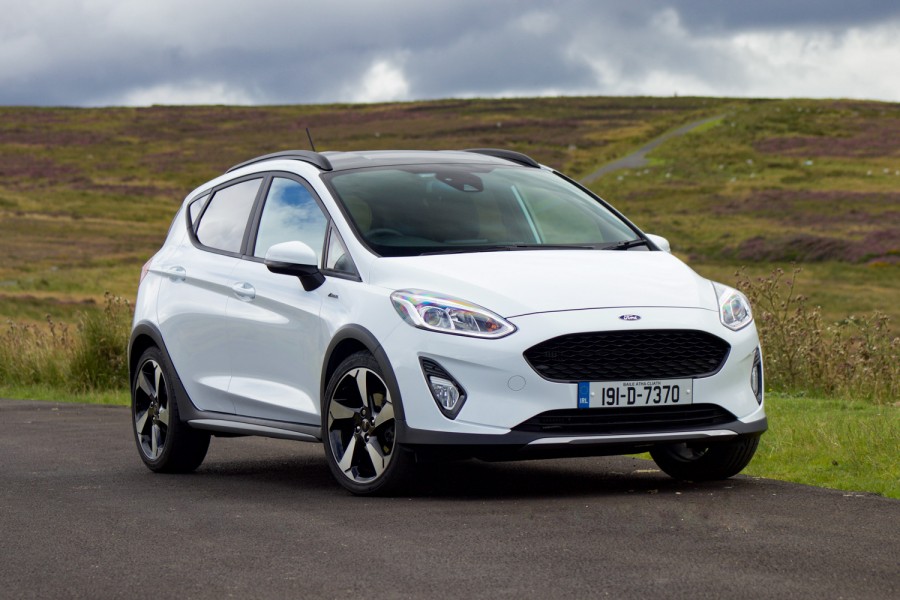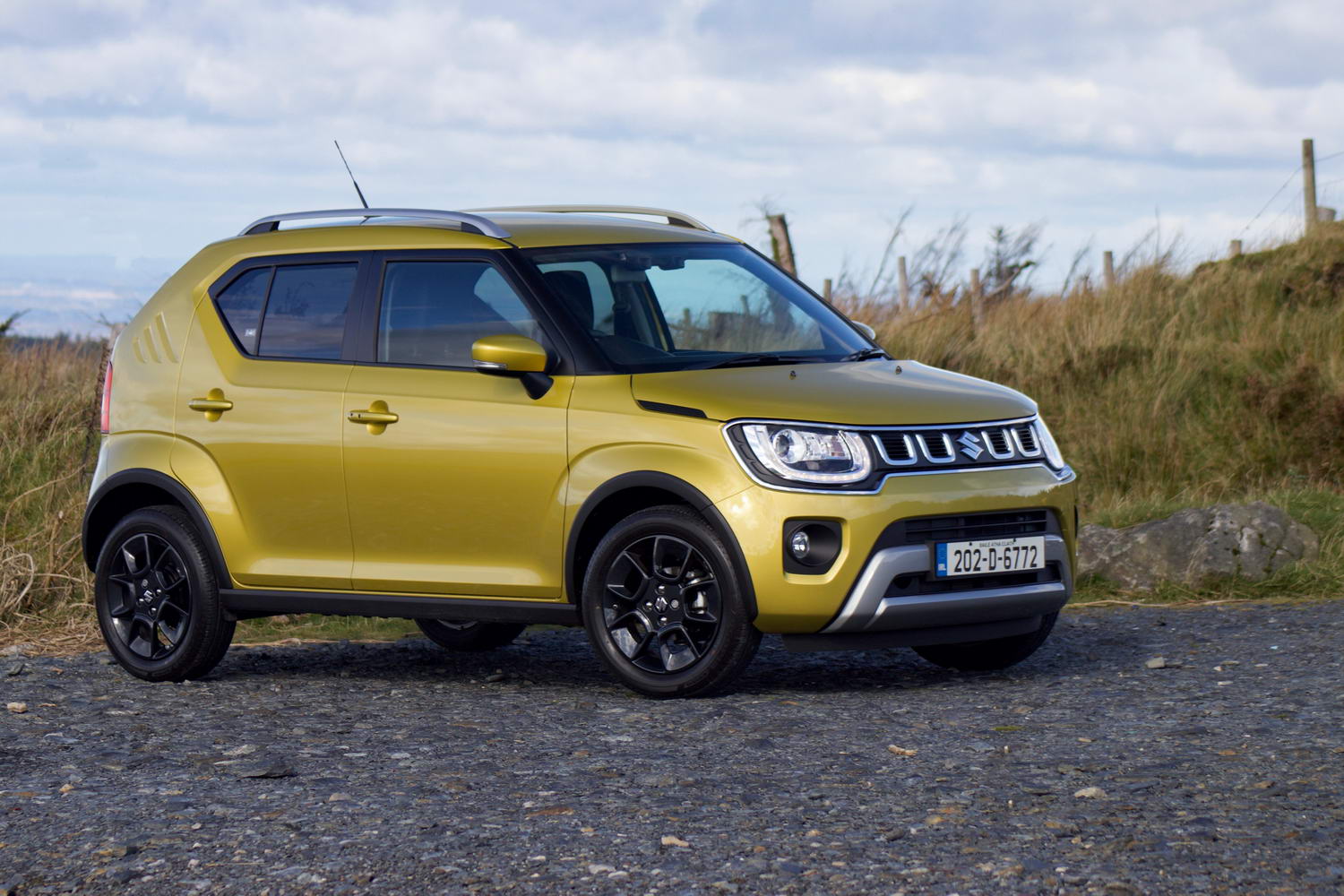The Dacia Sandero family returns for its third outing, complete with a raised-up Stepway model for those looking for a touch more of an outdoorsy flavour to their budget motoring. But as all models now have LED lights and a cabin that isn't shockingly plain, has the Romanian bargain brand made a wrong move in chasing a premium edge its products clearly do not need?
In the metal
While all models of the 2021 Dacia Sandero have new body panels, LED lamp clusters and smarter detailing, visually you won't mistake the Sandero Stepway for the normal hatchback. This is because the Stepway rides 41mm higher off the deck than the regular car, with 174mm of ground clearance in all as a result, and it has silver 'faux' skid plates front and rear, black-plastic cladding around its lower body portions, its own design of radiator grille complete with a small 'Stepway' logo underneath, different fog light surrounds, black details running along the bottoms of the doors, a dark surround for the rear number plate and roof rails up top.
These are modular on higher-spec models - in that, they can be mounted longitudinally or easily rotated to sit laterally across the top of the Dacia, and they'll hold up to 80kg, too.
Inside, the Sandero Stepway has orange accents in the centre of the air vents and orange pinstriping on seats that now feature a 'Stepway' motif. This particular colour is chosen because the exterior of the Stepway has an exclusive paint finish available to it, called Desert Orange. It's the one you can see in the pictures.
Overall, it's clear that the cabins of the Sandero Mk3 models have been improved in terms of design and finish compared to their immediate predecessors, although they will still feel plain compared to something like the interior of a Ford Fiesta. But then, the Sandero and even the Stepway will, of course, be cheaper than almost every model of Fiesta, so there's that to consider in the 'plus' column of Dacia's offering...
Driving it
The new Sandero has been transposed onto the same Common Module Family (CMF-B) platform as a Renault Clio V and is powered entirely by a range of three-cylinder petrol engines. There's a base-spec 67hp SCe unit with no turbocharger, which is reserved purely for that model of the regular Sandero hatch that comes in what is colloquially known as 'UN-spec': steel wheels, black bumpers, white paint. The bare basics, essentially.
However, Dacia Ireland never sold such a stripped-out Sandero here in the Mk2 line-up so it's unlikely this will appear here for the Mk3, and also you can't get the SCe in the Stepway's body in any market - which means turbocharged TCe engines are the norm, such as the 90 TCe as tested here.
Delivering 91hp and 160Nm, it comes with a six-speed manual gearbox as standard or, in a first for Dacia, there's a Continuously Variable Transmission (CVT) automatic as an option. We've not tried the CVT but we'd advocate against it for four main reasons: one, it will likely add more cost to the Sandero Stepway 90 TCe's modest asking price; two, we're guessing a CVT fitted to a budget car like a Dacia will not be a cutting-edge example of a CVT, and we are not fans of CVTs in general to begin with so the refinement levels will likely nosedive with the automatic choice; three, fitting the CVT drops the peak torque by 18Nm, which hits not only the fuel consumption and CO2 figures in a negative fashion, but also increases the 0-100km/h time to a veritable historical era of 13.4 seconds; and four, the six-speed manual is a lovely, light-of-throw pleasure to use, so you really don't need the automatic unless you have no other choice.
Overall, the driving experience of the Sandero Stepway is, like the rest of the car, notably polished from the slightly rough-and-ready thing it was before. The TCe is a sweet, willing engine and while its on-paper performance might look a trifle tardy, in reality it doesn't feel like it is significantly lacking. You don't have to mercilessly thrash it to keep up with everyday traffic flow and the Stepway will happily roll along a motorway in a dignified fashion, so it feels like plenty enough engine for the car it is fitted to.
Even if you do decide to spin it out, the noise it makes is appealing rather than harsh, while the 1.0-litre engine remains smooth right up to 5,000rpm, although you'll feel its exertions tail off noticeably after this point as peak power has been passed. We'd therefore normally say 'don't bother chasing the redline' but, if you look closely at the pictures, you'll see the Stepway's functional rev counter doesn't even have a redline, so we'll just say 6,000rpm is a zone you'll never, ever venture into with this car.
Not that it matters, because the Stepway always feels engagingly brisk in the midrange, due to its healthy 160Nm of torque. As this model is around 25kg heavier and obviously taller than the regular Sandero, you might also be expecting a hit on performance and economy, but we could ascertain neither in a broadly equal back-to-back drive with the hatchback.
And it's the same story in the corners. The Sandero Stepway, on its new platform, feels tauter and more composed than the old model it supersedes, but to suggest it's somehow sharp or thrilling in the corners would be stretching the boundaries of credibility in the extreme. The Stepway does feel like it leans a little more in the bends than the normal Sandero and, as the base hatchback is softer and less controlled than most leading B-segment superminis, then you're not uncovering some hidden dynamic delight here. The steering is light and feel-free, the brakes are passably OK, and the wheel control is just about fine, yet the Stepway is tidy enough on a twisting section of open road to link a series of corners together with a modicum of panache.
The problem is, we're never quite sure what these crossover-superminis are all about. Aside from the styling, we can't understand why you'd have the Stepway over the Sandero, because its taller and supposedly softer springs and dampers do not add another dimension of ride comfort to proceedings.
The Stepway is good in this regard; tyre noise is noticeable because it's in the area of sound suppression that the Dacia most readily gives away its bargain construction, but revised door mirrors reduce wind buffeting around the cabin at speed and the general ride composure is excellent for a car of this class. However, so's the ride comfort in the Sandero. And that's going to be cheaper. And it's not as if you feel like you are sitting that much higher in the Stepway, so really, what's the lifestyle version really for?
What we're trying to say here is this: there's no doubt the new Sandero Stepway drives appreciably better than the old one, even if the Mk3 isn't going to take overall class honours for either its refinement or its handling. But having the Stepway's taller stance adds precisely nothing to the experience you will have behind the wheel that the plain Sandero can't already deliver.
What you get for your money
We can't mark this section yet, because Dacia Ireland isn't putting the new Sandero and Sandero Stepway up for sale until June. Suffice it to say, we expect the Romanian hatch to score very highly in this department, given the old model started at €12,130 for an Alternative and rose to €13,930 as a Signature.
The Stepway is likely to command a small premium over its equivalent Sandero model, while there will also be a price increase across the board to reflect Dacia's deployment of a new chassis and a more upmarket kit list. However, we'd still expect most of the Sandero and Stepway range to come in below the €20,000 threshold, so it should remain the most affordable route into new-car ownership.
Summary
Dacia has done a grand job in moving both the new Sandero and its Stepway offspring much closer to the B-segment elite in terms of their mechanical refinement, though their safety ratings with the Euro NCAP are not impressive. Even so, if the pricing is right in Ireland, these two could be strong contenders in a competitive marketplace. What nags at us, though, is that this Stepway seems surplus to requirements. Unless you're a fan of lots of black plastic or the colour orange, the Stepway adds nothing of note to the Sandero's manners: it has more ground clearance but no extra off-road capability whatsoever, it'll be more expensive than the Sandero, it is no more comfortable to travel in than its hatchback relation and a Dacia Duster seems to make far more sense at this sort of financial level if what you want is a crossover more than anything else. So, definitely consider the new Sandero as part of your shopping list if you're after a cheap B-segment run-around; but don't succumb to marketing whims and avoid the perfectly likeable if somewhat redundant Stepway.




















